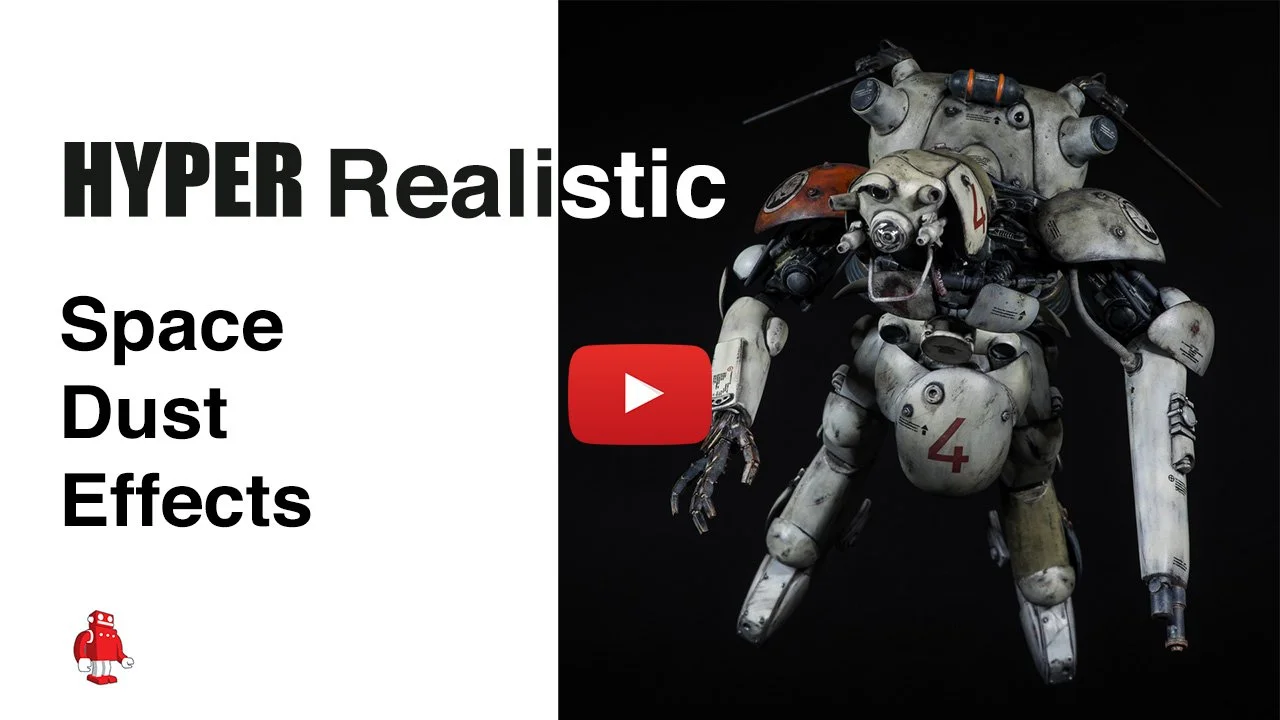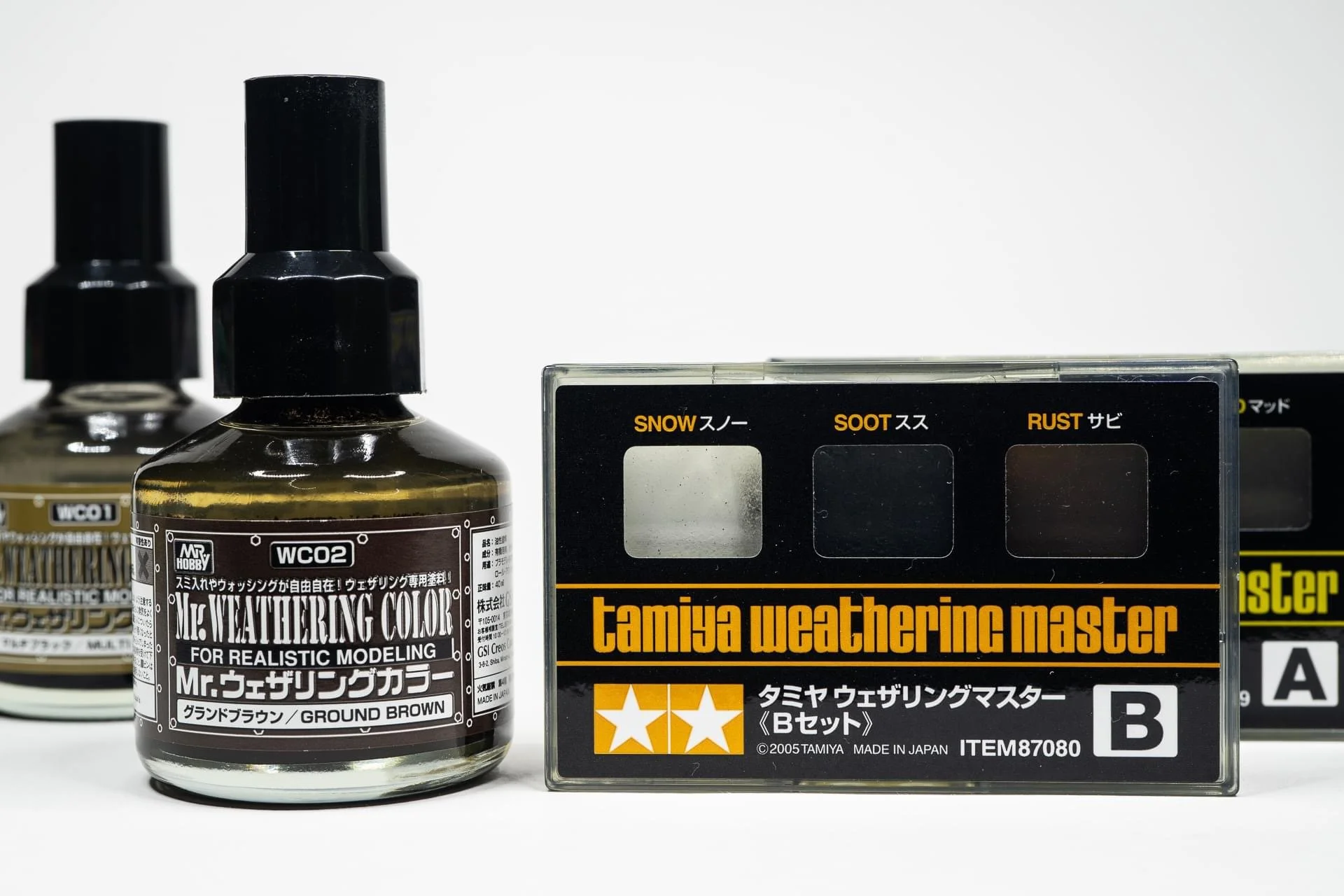Scale Model Exhaust Stain Tutorial with Lincoln Wright of Paint on Plastic
Hello friends, today I would like to share with you a Scale Model Exhaust Stain Tutorial with you.
There are a handful of ways to get this look, today I will be using an airbrush. I quite like this method as it’s fast, durable and can be handled and worked over quickly.
Please also watch the accompanying Tutorial Video above to see it in action if you prefer that way to learn. Consider subscribing and liking the video too because it helps me out with the almighty youtube algorithm (all hail the algorithm!) and allows our community to discover this video too.
Here’s how it looks on this model, it’s a Griffon Falke from Hasegawa Models, please click on the image to take you to the full gallery to check out.
and if you’d like to see the unboxing to learn more about the kit, here’s my post about it. or mash the video linked below.
Dead Flat Paints like these are the way to go!
Ok, the paint I am using today is Flat Black from AK-Interactive’s Real Color range. Another paint I recommend for this step would be Tamiya XF-1 Flat black. They are very similar in being extremely flat with a slight granular finish as opposed to the smoothness of satin and gloss paints which are better suited for thinning to use as filters.
I’m using the Real Color thinner here and must share that it has tidied up my bench a little. It’s actually pretty useful thinner and works for Tamiya, Real Colors, Mr Color and Gaianotes paints. Very useful.
For this effect, we want the paint to be quite thin. Maybe 3 times thinner than for a normal base coat. I don’t work so much in ratios and enjoy to eyeball my mixes as I feel it teaches me more about paints and their properties so that I can do more cool effects with them in the future. You can easily see how much I’ve thinned it in the video.
Mixing it in a plastic tub also helps to spot any clumps or impurities and then into the airbrush cup it goes - this is a 0.3mm airbrush, the basic model from Sparmax.
Before going anywhere near the model, I like to test shoot just to make sure that paint is coming out and that it looks about right for my intended purpose. I spray a larger patch to test how translucent the mix is and then a close, squiggly line for close up effects.
Ok, let’s get ready to drop some fine lines. I’ve turned my pressure way down, around 8psi - I think anything under 10 is good.
Keys to the technique here are;
Patience - recovering from too much paint or missed shots here would not be fun, so let’s go slow and steady. Yeah, I know that’s funny coming from the guy who slaps huge brushes around but I’m serious, sometimes we just gotta slow it down and nail it so that we can then move on to happy, loose shenanigans again.
Try to hold the model at such an angle that you can see the paint hitting the surface and ever so slightly making the surface damp - not wet! Runs will totally ruin our desired effect of smoke because runs look wet and smoke should be completely dry!
Mist on some lines and move on, laying down thin effects. Examine them closely after they dry.
Once you get the basic outline sketched in and your hand to eye coordination is locked in and you are feeling confident, you can nail your effect by going in a little harder and defining the centre.
STOP! Haha, really! I know and feel your enthusiasm too but we must back off when we hit the sweet spot. It’s easy to add more but we can’t control backspace this! Stop, put the airbrush down. Go look out the window and come back and be honest. If you get the happy feels, you are done for this step. If you feel it needs more, make it happen. This is your world, your model and your vision. If you have a strong vision, you will know it when you see it. If this is a blurry vision model and you are not sure and still leanring and experimenting, be happy with your progress and chalk it up to a fun learning experience. You did well!
Now as a Bonus, I did also shoot from Flat White into the centre of my smokey soot marks. My idea here was to show the extreme heat damage from the flame out and how it damaged the surface. Is it realistic? Well maybe a little but I wanted to do it and hoped it would look cool. Haha, seriously, that was the actual reason I did this. I think it turned out really well and was a happy experiment for me and I will use this one something again.
Here’s how it turned out and I’m most happy with it, visually interesting with a hint of realism and more cool effects to look at. For our hobby, that’s a win right?
Checking carefully and I think this is good for the dark effects.
Heat scorch makes, the panel replaced and oops, the Techs added too much grease again!
Next up I will be showing you how to add Pigment Effects over this stage so please make sure you are either subscribed to my youtube channel or our newsletter here because I don’t want you to miss out on this one - it’s a mighty powerful one two punch effect.
Thank you very much for reading and watching and a heartfelt thank you to wonderful supporters who make this content possible to be shared with our community.
All my tutorial videos are available to my Patreon supporters, click here to sign up and thank you very much in advance for the support!
More soon and happy modelling my friends,
Linc
What’s Next Linc?
Pigment tutorial coming next!










Welcome to Part 2 of my MASKENBALL Weathering Masterclass—the ultimate guide to advanced scale modeling weathering techniques for Maschinen Krieger (Ma.K) builds!!